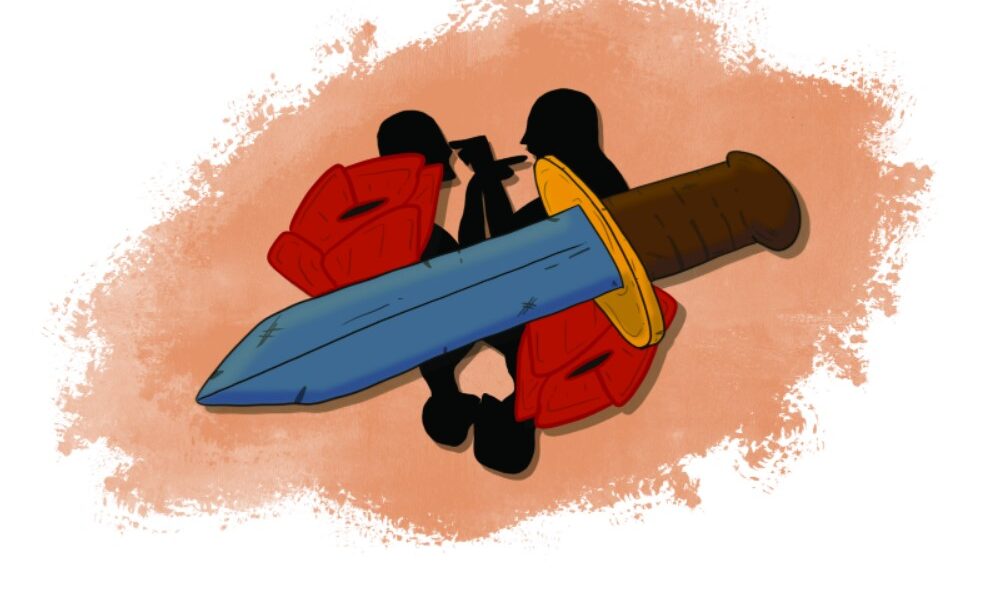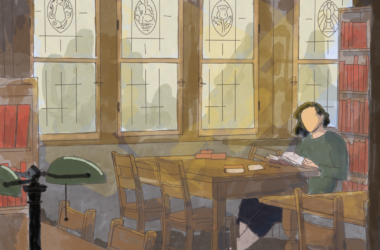From impassioned kisses in the rain to meet-cutes in high school hallways, romantic literature and entertainment have never failed to engage audiences through beloved clichés. One that continues to withstand the test of time is the enemies-to-lovers trope, in which two characters’ mutual hatred toward one another progressively transforms into feverish love. Boasting both a long record of positive receptions and a rocky history, this dynamic keeps us coming back for more through touching demonstrations of love’s resilience in spite of denial.
In the case of period pieces, the trope engages readers by placing familiar feelings in historical contexts, challenging the disconnect we often feel between our lived experiences and those of people from centuries past. The second season of Shonda Rhimes’s whimsical and provocative period drama Bridgerton, released on Netflix on March 25, centres around a hate-to-love storyline between Anthony Bridgerton (Jonathan Bailey) and Kate Sharma (Simone Ashley). Based on Julia Quinn’s eight-part book series of the same name, the show follows the large, wealthy Bridgerton family as they navigate London’s competitive seasons of Regency-era courtship. Through extravagant balls, romantic promenades, and passionate declarations of devotion, both verbal and physical, viewers witness each Bridgerton child find and express love in ways rarely, if ever, depicted in period pieces.
The contrast between ardent displays of adoration and disgust within the Regency era’s stiff social rules of etiquette and formality has enraptured audiences for centuries, as demonstrated by the resonating power of Elizabeth Bennet and Mr. Darcy’s hate-turned-love relationship in Jane Austen’s Pride and Prejudice (1813). The enemies-to-lovers narrative functions effectively in period dramas as it shocks readers with an emotional aspect of the Regency era that was firmly suppressed by the upper class, and therefore rarely included in the epoch’s representation in media. Audiences are unable to look away from these period-era characters, as they are brought to life through outward expressions of the same emotions that we feel today. This relatability is not restricted to previous historical contexts: People often feel most connected to characters who are at their most vulnerable, regardless of the divide in life experiences.
However, the cliché’s “enemy” aspect can sometimes go too far. In some cases, this relationship trope is filled with disturbing demonstrations of loathing, before all is magically forgiven and the characters end up together—as is the case in the relationship between Claire (Molly Ringwald) and John Bender (Judd Nelson) in The Breakfast Club (1985). Although Claire and Bender eventually realize their feelings for one another, this resolution implicitly recontextualizes the string of mutual acts of hatred toward one another as “flirting.” At one point, Bender sexually assaults Claire, peering under her skirt and making her clearly uncomfortable. Films should demonstrate the persistence of love despite each characters’ initial resistance toward it without making characters minimize and forgive inexcusable actions, including sexual assault. The main flaw of the enemies-to-lovers storyline is thus its reluctance to hold characters accountable in favour of moving the plot forward.
Meanwhile, representations of 2SLGBTQIA+ couples fare no better under the trope. While the celebrated Netflix series Sex Education has received praise for its authenticity and inclusivity, the relationship between Eric (Ncuti Gatwa) and Adam (Connor Swindells), his former bully, has been criticized for perpetuating the idea that racialized and queer characters should forgive people who have abused and mistreated them for the sake of love.
Nevertheless, we continue to feel the addictive comfort in watching love triumph over hate, especially considering the numerous ways different people and institutions try to place restrictions on who can love who, and how. Whether lovers are first enemies due to family rivalries (Romeo and Juliet (1597)), class divides (Titanic (1997)), or other forms of division, witnessing the heartwarming resilience of love in the face of hate momentarily restores our faith in humanity.
Demand for enemies-to-lovers content shows no signs of disappearing any time soon. From TikTok’s fascination with Sally Thorne’s romance-novel-turned-movie The Hating Game, as well as Bridgerton’s newest season, viewers and readers alike continue to be captivated by the evolution from enmity to endearment. While many critics may be determined to hate it, if there’s anything that the trope has shown, love often follows closely behind.








